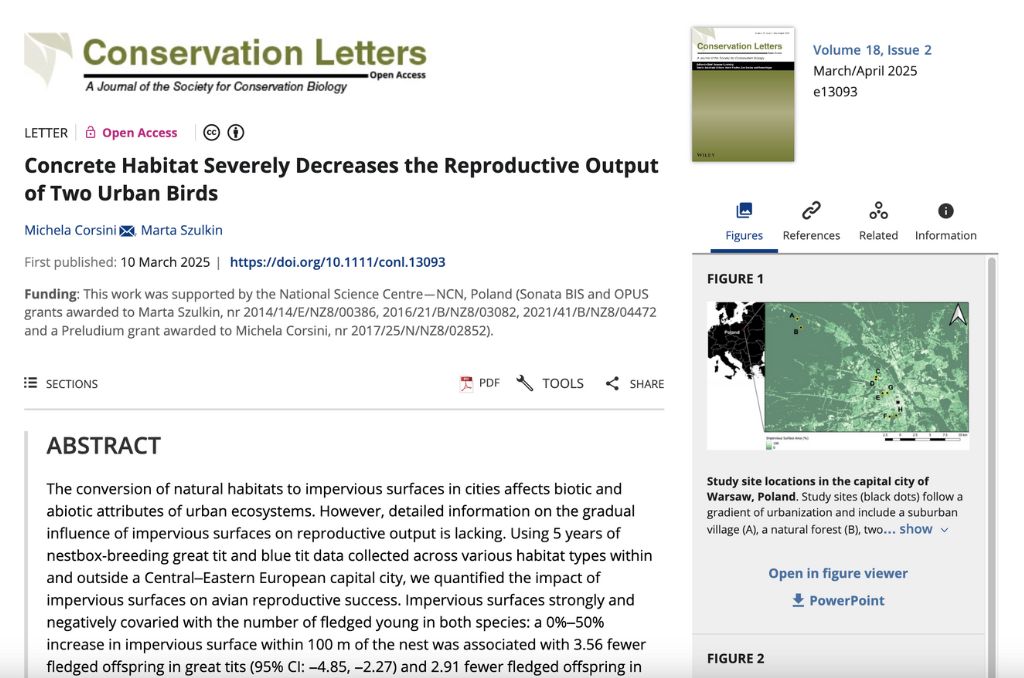New Research on Reproduction of Birds in Cities

The more concrete, the lower bird breeding in cities. A new study by Prof. Marta Szulkin from the Faculty of Biology (University of Warsaw) not only confirms this thesis, but also provides precise data that decision-makers can use. An article on the subject appeared in Conservation Letters.
The study, the results of which were published in the journal “Conservation Letters,” provides evidence that increases in impervious surfaces, such as concrete and asphalt, translate into reduced breeding success for urban birds. Building up half of the biologically active area is associated with a halving of the number of chicks brought out of nests.
“With rapid urbanization, cities need hard data to support decisions on how to shape green infrastructure. Our publication provides data for urban planners, landscape architects and policymakers to help guide land use. It also shows exactly how, with the systematic growth of concrete and asphalt in the environment, the number of young flying out of the nest box is decreasing,” – says Prof. Marta Szulkin.
Pioneering research
The scientist stresses that this is pioneering research in Central and Eastern European cities.
“In the publication we used data from five years, but our research is actually the culmination of 10 years of my work in Poland. During that time, we set up a system of 500 nesting boxes in Warsaw and its immediate surroundings,” – says Prof. Marta Szulkin.
The booths were placed not only in parks, but also in residential areas (including Olszynka Grochowska and Muranow), cemeteries and urban and suburban forests. Booths were also found at the Ochota Campus of the UW.
The publication presents accurate estimates for two commonly occurring species of titmice: richly colored and praying mantis. The researchers observed the birds for several weeks each year from early spring. A number of PhD students participated in the field research. The first author of the article is Dr. Michela Corsini, a former doctoral student of Prof. Marta Szulkin.
The main research findings:
– loss of vegetation and natural nesting sites in highly urbanized areas is a growing challenge for urban wildlife;
– nesting success of birds decreases as impervious surfaces increase – concreting green areas by 50% reduces the number of young flying out of the nest box by half;
– city planners and urban planners can use the scientists’ data and design urban spaces to create green spaces that are as friendly to urban birds as possible.
